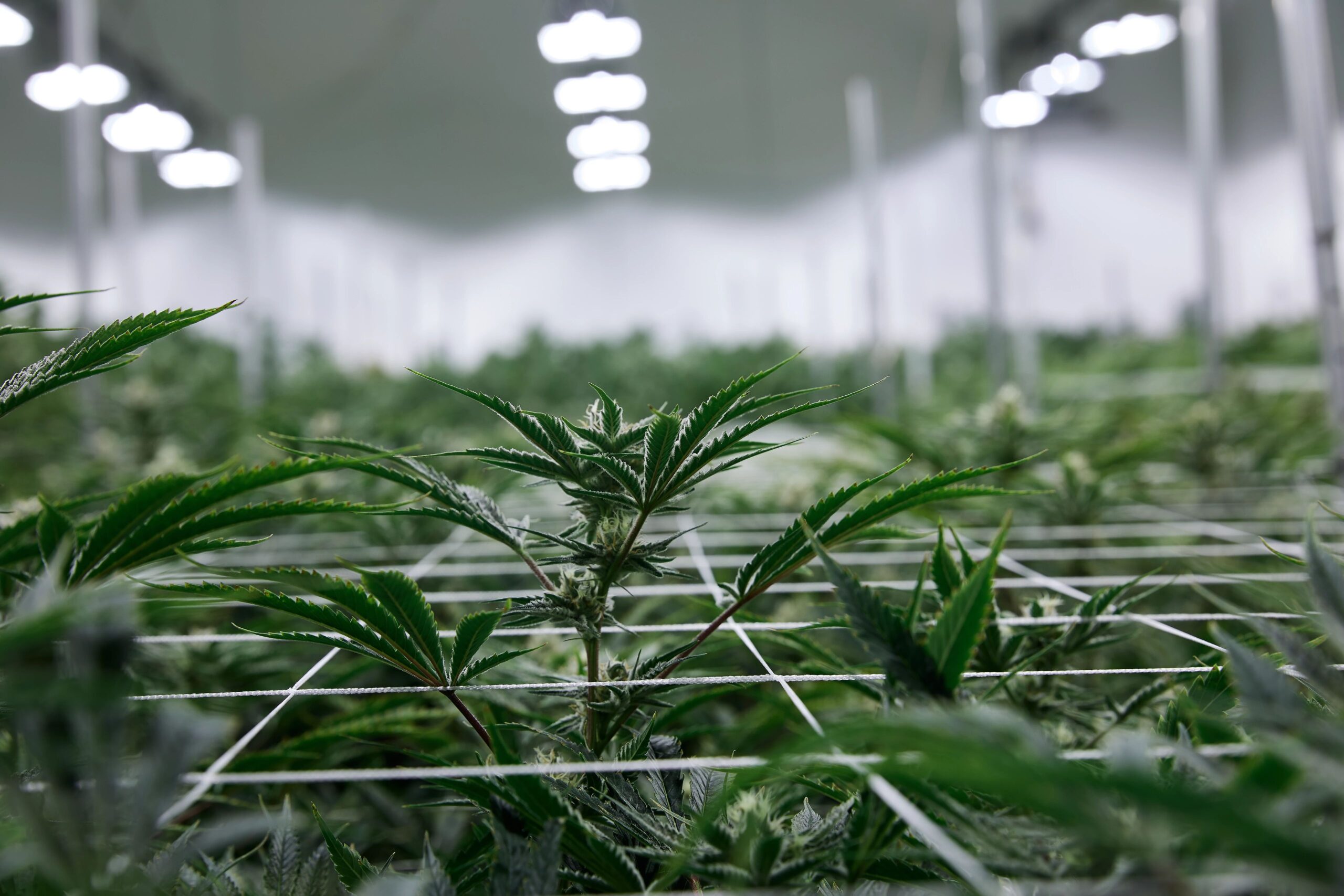When cultivating weed indoors, it's essential to do so as efficiently as possible. Indoor crops often work with limited grow space, and the added expense of artificial light compels growers to maximize their resources. Cultivators face this challenge with every crop: how do you make the best use of limited space and ensure every plant gets as much light as it needs? Enter the sea of green method.
What is sea of green?
Necessity is the mother of invention. As cannabis cultivators moved indoors in the 1980s and 1990s, they began to experiment with techniques that would maximize yields with limited resources. One such technique surpassed the rest and spread through the cultivation community over the years.
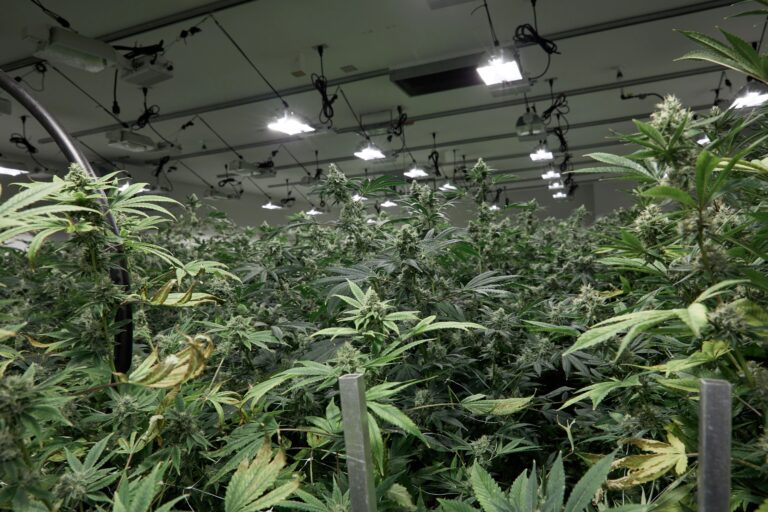 Photo by: Gina Coleman/Weedmaps
Photo by: Gina Coleman/WeedmapsImage lightbox

The sea of green method, also known as "SOG," is a low-stress technique that grows many small cannabis plants at once rather than a few larger plants. The method plays on the idea that if plants in a small space are forced into their flowering phase early, they only need to grow to half their size to support cola development. The small plants flower in less time and take up less space—a win-win situation.
The sea of green method clusters your many plants in tight quarters together under grow lights. As the plants grow together, they develop a canopy of buds under the light, creating the so-called "sea of green." With equally given care, regular nutrition, and a watchful eye on each plant, you can raise a successful SOG crop in any grow room.
How much does a sea of green plant yield?
A SOG yield per plant depends on the number and types of plants you cultivate. During the flowering phase, a SOG-grown cannabis plant will develop a single large cola at the top. These plants require little training to develop their buds aside from typical plant upkeep.
 Photo by: Gina Coleman/Weedmaps
Photo by: Gina Coleman/WeedmapsImage lightbox

While these smaller plants may not develop as many colas as a 10-foot-tall sativa, you can grow many more plants in a smaller space and produce similar yields with SOG.
A healthy grow space is a must for ideal yields. SOG plants require the correct pot size, type of light, water pH, nutrients, soil types, environmental conditions, and other growth factors. Cultivators who dial in their formulas can tease maximum yields per square foot out of their SOG crops.
How to use the sea of green method
It takes just a few simple steps to cultivate a successful crop with the SOG method.
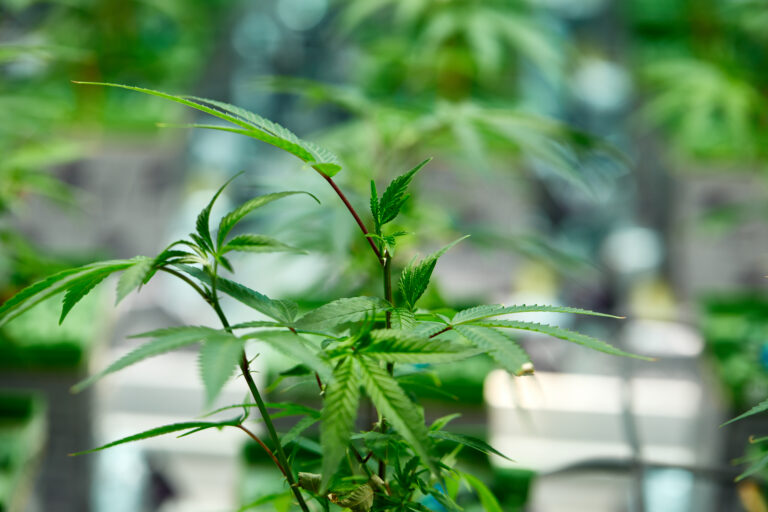 Photo by: Gina Coleman/Weedmaps
Photo by: Gina Coleman/WeedmapsImage lightbox

Step 1
To create clones, either germinate seeds or obtain cuttings of other plants. It's easier to use clones for your SOG crop because you can ensure the plants are of the same cultivar and will grow the same way, all conditions being equal.
Step 2
Place your plants in pots seven to twelve inches across to ensure they have enough soil to develop healthy roots. Arrange your pots with approximately one or two plants per square foot, being careful not to place the plants too close together. This creates a seamless plant surface area, and while this at first sounds like a good idea, it encourages the plants to compete with each other for light and stresses them. More stress conserves biomass and, in turn, limits the production of buds.
Step 3
Once your plants are snug in their pots, light your grow space with 18 - 24 hours of light until they reach 10 - 12 inches in height. Be careful that your plants are at an even height so each one receives an equal amount of light.
This phase of the growing cycle is called the vegetative stage, and how long a crop stays here depends on the cultivator's preference. Some grow each plant at 18 - 24 light hours until they reach around 10 to 12 inches (25 to 30 cm) in height. Other growers will switch the lighting cycle when the plants are 4 - 6 weeks old or even six inches tall.
Note: It's not recommended to switch from the vegging phase sooner than four weeks, as the plants aren't quite mature enough for flowering. Adding an extra week or two may boost yields, as it's all about finding the perfect ratio of yield to harvest speed.
Step 4
When you're ready to switch to the flowering phase, convert your light cycle to 12 hours of light and 12 hours of darkness. The light switch will force each plant to create a wide canopy of green, focusing all its energy on developing a single cola.
It's important to keep light evenly spread in this phase and far enough from the plants to prevent any hot spots. As the canopy develops, trim the branches underneath to propagate as clones for future SOG crops.
Step 5
Finally, when your plants are ready, it's harvest time. A good indicator of harvest readiness is the clarity of your buds' trichomes: once they're white and cloudy, your SOG crop is ready to go.
How long should I veg for best yield?
It all depends on the resources you have to work with and how much time you have to produce your crop. Most growers will veg for four to six weeks or when their plants reach ten inches in height. Some cultivators switch to the flowering light regimen when the cannabis plants are only about six inches tall or two to three weeks into their growth.
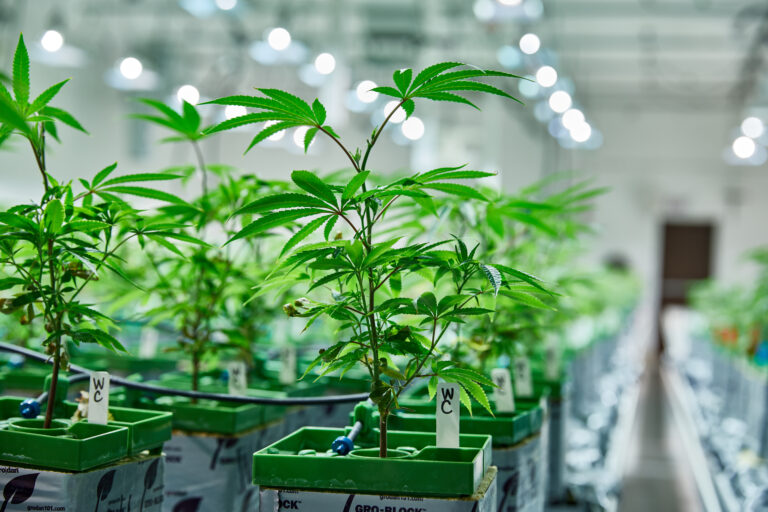 Photo by: Gina Coleman/Weedmaps
Photo by: Gina Coleman/WeedmapsImage lightbox

Other SOG method growers who can invest in larger pots and don't need to cram as many plants per square foot can allow for more extended vegging states, up to seven or eight weeks. The larger pots provide more room for roots to spread. Adjust based on your growing situation, space, and the strain you're cultivating, and know that practice makes perfect. Successful SOG is all about finding the ideal balance between yield, growing conditions, and fast harvest time.
Do clones flower faster than seeds?
The SOG method is especially useful when working with clones. A clone is a cutting from an adult cannabis plant that can be replanted and produce buds. Clones save you the trouble of popping male seeds on accident or obtaining a cultivar of poor quality. And while clones face many of their own issues when it comes to successful replanting, they do flower faster than their seed counterparts.
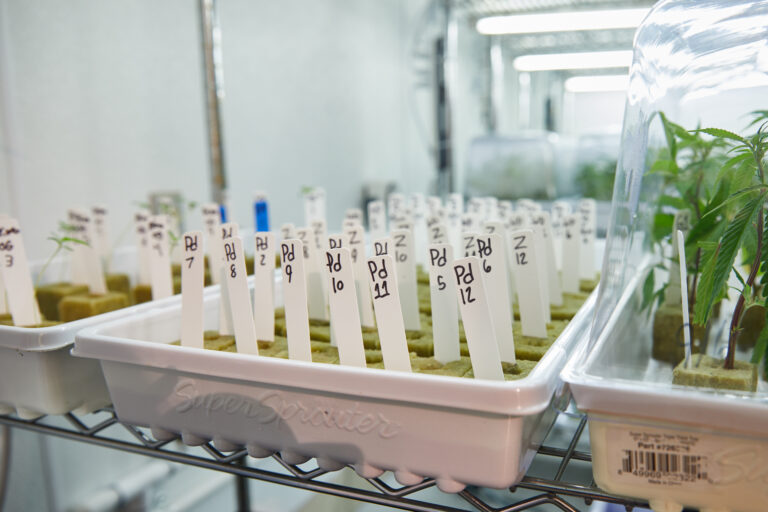 Photo by: Gina Coleman/Weedmaps
Photo by: Gina Coleman/WeedmapsImage lightbox

Clones reach maturity more quickly because they're further along in their development than a cannabis seed yet to pop. Clones also guarantee identical plants in your SOG spread, helping ensure your canopy is the same height and produces the same flowers.
However, it's essential to understand that flowering time varies from cultivar to cultivar. Each variety of cannabis may take more or less time to flower, regardless of the SOG method. Also, not every strain is viable using SOG — indicas generally perform better than sativas, as they naturally have faster flowering cycles and develop shorter plants. Know what strain you're growing and its average flowering time to ensure a thriving SOG canopy of buds.
Featured image by Gina Coleman/Weedmaps


